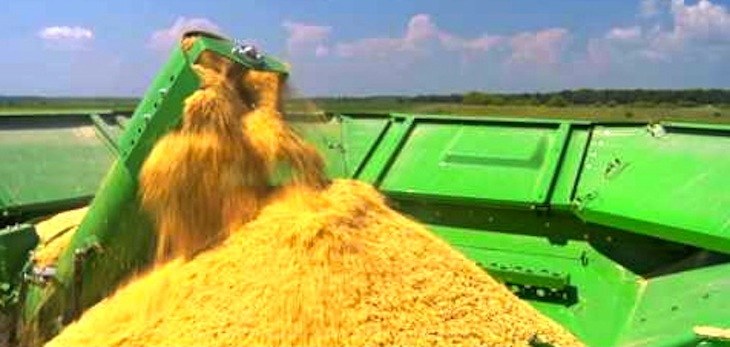Despite floods and hurricanes, rice yields expected to top 2016 figures
by September 18, 2017 7:26 pm 558 views

Flood waters hampered rice planting this season and the remnants of Harvey and Irma poured rain and winds on rice fields ready to harvest late in the summer. Arkansas produces roughly half the rice grown in the United States.
Rice farmers faced high odds this year, but yields in the state are likely to hit around 161 bushels per acre, up from the 154 bushels per acre average in 2016, rice agronomist Dr. Jarrod Hardke told Talk Business & Politics.
About 60% of the state’s estimated 1.1 million rice acres has been harvested as of Monday (Sept. 18), according to the University of Arkansas Division of Agriculture. Most of the rice harvested is from the southern parts of the state that were less impacted by the floods and hurricanes, and the yields there were expected to be higher, Hardke said. Two-thirds of the state’s rice crop is grown in Northeastern Arkansas and the yields could be less there, but so far the region is holding its own, he said.
“Our outlook is surprisingly good,” Hardke said. “We feared the worst, but not as much damage was done as we expected.”
The remnants of hurricanes Harvey and Irma doused heavy rains onto crop fields, and high winds caused some plants to “lodge,” or bend to the ground. Lodged rice is harder to harvest and often produces lower yields, up to 20 bushels less per acre. Predictions of Irma winds approaching 30 miles per hour never materialized, and the rains were less. Rice that sits in sitting water for extended periods of time can be harder to mill and it can produce lesser quality milled rice. Farmers dodged a major bullet, he said.
FLOOD DAMAGE
About 5% of the state’s rice crop was impacted by late season rains and winds, or about 40,000 acres. Damage was sporadic statewide, meaning there wasn’t any particular place that was harder hit, Hardke said. Many fields only had “lodged spots” some no bigger than a truck, he said.
Yields could be impacted by the harvest in Northeast Arkansas. Two-thirds of the state’s rice is grown in the region, and most of the 40% that remains to be harvested is there, Hardke said. Hurricanes hit late, but flood waters starting with the Black River in Pocahontas in April inundated much of the area.
More than $300 million worth of damage was caused when the Black River at Pocahontas overwhelmed an earthen levee system, sending a wall of water that blanketed the countryside. Floods along the river and others damaged or destroyed about 970,000 farmland acres. At the time, an estimated 89% of the rice crop was already in the ground. About 100,000 acres was lost, and the state’s total rice acreage is down about 30% as compared to 2016. It’s one of the smallest crops since the mid-1980s. Producers attempted to re-plant about 30,000 acres lost to the floods.
Yields may rebound this year, but they will be far lower than yields from earlier this decade. The state set records with 168 bushels per acre in 2013 and 2014. In 2012, the state harvested 166 bushels per acre, and garnered 163 bushels per acre in 2015.
THE BIG BUSINESS OF RICE
Rice is a critical agricultural commodity in Arkansas. The Natural State produce about half the nation’s rice. Each year Arkansas farmers grow almost 9 billion pounds, and it produces half the rice grown in the United States. It’s a $6 billion industry in the state, and creates about 25,000 jobs directly or indirectly, according to Arkansas Rice Federation. About one in five jobs statewide are tied to agriculture.
Potential new markets could open in China and Cuba in the coming years. China recently opened its rice import markets to the U.S., and there has been a push to allow agriculture credits in communist-controlled Cuba. A bilateral agreement was reached between China and the U.S. in July to allow American farmers to sell rice in the communist-controlled country.
China has been able to produce enough rice to supply its population and region for many years. In 2006, U.S. officials began talks to open the market up to U.S. rice growers. The country’s population has grown, and it needs new suppliers. United States Department of Agriculture expects China to import 4.8 million metric-tons of U.S. rice from 2017-18.
Cuba imports nearly 600,000-metric tons of rice each year. President Barack Obama attempted to ease trade restrictions with the island nation in place since Cuban Dictator Fidel Castro assumed power more than five decades ago. In June, President Donald Trump announced plans to roll back the Obama policies, and it could hurt trade markets between the two countries. Arkansas’s proximity to the Gulf of Mexico and its rice quality make it a natural trade partner for Cuba. The state’s congressional delegation has tried to reach an agreement with Trump to allow for greater rice sales with the island nation.
